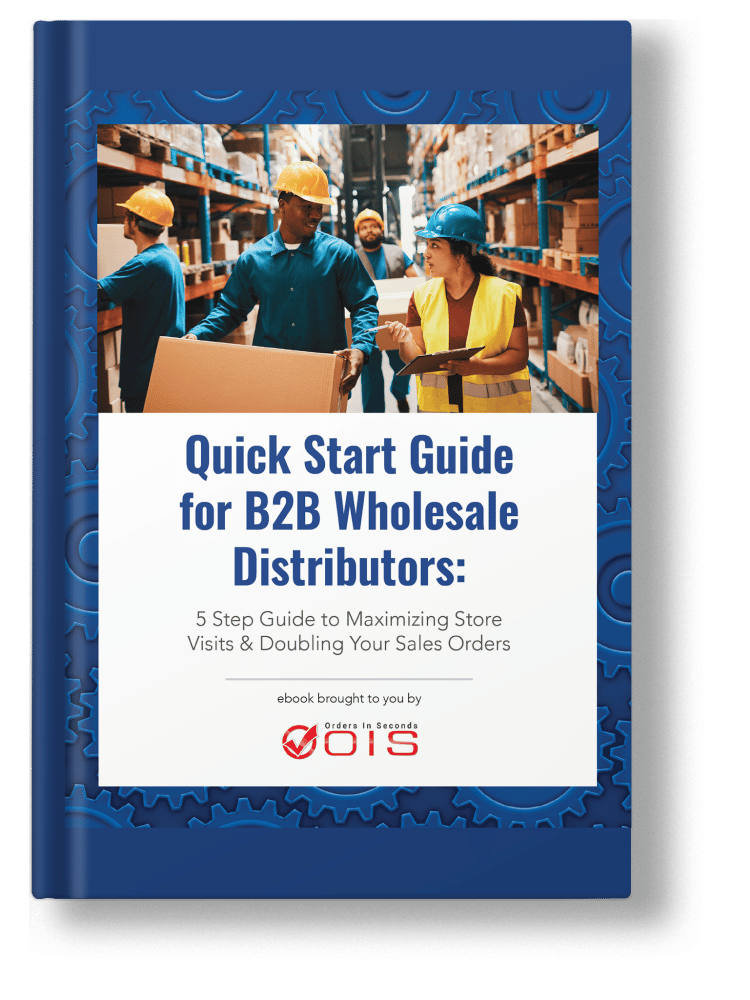Key Takeaways
Cloud inventory management uses cloud systems to track inventory in real-time, providing businesses with visibility and control from any location. In this article, you’ll discover the key concepts, benefits, and features of cloud inventory management, along with practical examples and career paths.
- Cloud inventory management systems offer real-time inventory visibility, increased accuracy, and improved decision-making capabilities, facilitating efficient management of stock levels across multiple locations.
- Core features of these systems include automated replenishment, seamless integration with existing business systems, real-time alerts, and centralized data collection, significantly enhancing operational efficiency and reducing manual errors.
- Emerging technologies such as AI, IoT, and blockchain are poised to further transform cloud inventory management by optimizing forecasting, improving real-time tracking, and ensuring supply chain transparency, thereby enhancing overall efficiency and reducing inaccuracies.
Table of Contents
- Understanding Cloud Inventory Management
- Core Features of Cloud Inventory Management Software
- Enhancing Inventory Control with Cloud-Based Solutions
- Case Studies: Success Stories in Cloud Inventory Management
- Roles and Careers in Cloud Inventory Management
- Training and Certification for Cloud Inventory Management
- Monitoring and Managing Cloud Inventory Assets
- Future Trends in Cloud Inventory Management
- Summary
- Frequently Asked Questions
- Elevate Your Inventory Management with OIS Inventory App
Understanding Cloud Inventory Management

Cloud inventory management serves as a unified platform that tracks inventory assets in the cloud. Users can easily view and analyze information related to their inventory in one place. This system improves inventory level visibility and enables real-time tracking of inventory movements, critical for maintaining high fill rates and cost reduction. Imagine having the power to manage your inventory from anywhere in the world, with real-time updates accessible from any device. That’s the promise of cloud inventory management.
The Cloud Inventory dashboard provides a comprehensive view of all your assets, including detailed descriptions and categorization, facilitating efficient management of various product types. With these systems, businesses can track inventory across various sites globally, ensuring that stock levels are always optimal. This centralized approach not only improves accuracy but also streamlines the entire inventory management process.
Moreover, cloud inventory management systems, like Oracle Fusion Cloud Inventory Management, offer the following benefits:
- Increase customer satisfaction by providing visibility and control over goods flows
- Improve decision-making and efficiency in operations
- Benefit both the business and its customers
Next, we’ll examine the key concepts and advantages of these solutions in more depth.
Definition and Key Concepts
Cloud inventory management involves managing stock through a cloud-based software application that integrates with existing accounting and order management systems. The key concepts include:
- Cloud storage, which offers scalable and secure data storage
- Real-time inventory visibility, which allows businesses to track inventory movements as they happen
- Inventory control, which ensures optimal stock levels are maintained.
Utilizing these concepts, businesses can improve their inventory management processes and react more efficiently to market demands.
Benefits of Cloud Inventory Solutions
One of the primary benefits of cloud inventory management is improved customer satisfaction. Systems like Oracle Fusion Cloud Inventory Management provide:
- Increased visibility and control over goods flows
- Ability to meet customer demands more effectively
- Streamlined shipping processes, ensuring on-time delivery
- Enhanced overall customer experience
Additionally, cloud inventory management offers the following benefits:
- Reduces costs through better control of goods flows and optimized processes
- Can be customized to meet specific business needs
- Scales as the business grows, making it a flexible solution for companies of all sizes
- Allows for quick shifting of stock between locations in response to changing customer demand, avoiding stockouts and excess inventory
- Boosts efficiency and profitability
Core Features of Cloud Inventory Management Software

The core features of cloud inventory management software are designed to streamline inventory operations and improve overall efficiency. From real-time tracking to automated replenishment and seamless integration with existing business systems, these features make managing inventory a breeze.
Next, we will delve into these features in further detail to comprehend their contribution to effective inventory management.
Real-Time Inventory Visibility

Real-time inventory visibility is crucial for staying ahead of customer demands and boosting operational efficiency. Cloud-based inventory management systems offer increased visibility, greater accuracy, and traceability, which are essential for making informed decisions about inventory. By providing a detailed view of data in real-time, these systems enable businesses to quickly identify and address potential issues.
Moreover, real-time updates ensure that inventory levels are consistently up-to-date, allowing businesses to:
- Track inventory movements accurately
- Forecast future demand more effectively
- Enhance customer satisfaction by enabling order tracking and ensuring timely deliveries
In essence, real-time inventory visibility transforms how businesses manage their stock and respond to market changes.

Avoid the Top 5 Mistakes Wholesale Distributors Make
Automated Replenishment and Alerts
Automation is a game-changer in inventory management, significantly reducing manual errors and improving efficiency. Cloud inventory management systems automate tasks like reordering stock and tracking shipments, freeing up staff time for other critical tasks. Automated stock replenishment ensures that critical items are always in stock, reducing downtime and ensuring a continuous supply.
Real-time alerts notify users when inventory levels fall below defined thresholds, enabling proactive replenishment and preventing stockouts. These systems also include features like barcode scanning and the ability to create purchase orders directly, further streamlining the inventory management process. By leveraging automation, businesses can maintain optimal inventory levels with minimal manual intervention.
Integration with Business Systems
Integrating cloud inventory management with existing systems provides the following benefits:
- End-to-end visibility and control over inventory
- Seamless data sharing between different business processes
- Enhanced overall efficiency and accuracy
- Real-time processing of transactional data
- Accurate inventory-level reports
- Facilitated better decision-making
This holistic approach ensures that all aspects of inventory management are aligned and optimized.
Enhancing Inventory Control with Cloud-Based Solutions
Cloud-based inventory control offers enhanced visibility, scalability, and efficiency in managing stock levels and supply chain operations. By leveraging these solutions, businesses can centralize and standardize their inventory data across multiple locations, reducing discrepancies and improving data accuracy.
Next, we will examine how these solutions improve inventory control through centralized data collection, multi-warehouse management, and customizable reporting.
Centralized Data Collection

Centralized data collection is a cornerstone of effective inventory management. By consolidating inventory data in a single platform, businesses can:
- Improve accuracy and traceability, ensuring that items remain in stock
- Reduce supply chain bottlenecks
- Address potential issues promptly
- Enhance overall operational efficiency
Accurate and real-time data collection is key to achieving these benefits.
This centralized approach also supports data governance, integration, and analytics, enabling better decision-making.
Multi-Warehouse Management
Managing inventory across multiple warehouse locations can be challenging, but cloud inventory systems simplify this process by providing real-time tracking and management capabilities. These systems allow businesses to:
- Manage warehouses remotely from anywhere in the world
- Access warehouse data and make necessary adjustments in real-time
- Prevent potential stockouts or overstock situations
This ensures that inventory levels are always optimal.
Moreover, permissions can be set to allow access to one or multiple warehouse locations, making it easier to manage inventory across different sites. This flexibility ensures that businesses can respond quickly to inventory demands and disruptions, maintaining smooth operations across all locations.
Customizable Reporting and Analytics
Customizable reporting and analytics are vital for informed decision-making and accurate forecasting. Cloud inventory management systems offer businesses the ability to:
- Tailor reports to meet specific operational needs
- Provide real-time updates and detailed insights
- Enable precise reporting that supports improved inventory forecasting and planning
- Help businesses anticipate demand and adjust stock levels accordingly
Case Studies: Success Stories in Cloud Inventory Management

Real-world examples showcase the transformative power of cloud inventory management. Several companies have successfully implemented these systems to optimize their warehouse operations and achieve significant cost savings. We’ll examine a few case studies to understand how businesses have navigated supply chain disruptions, accommodated fluctuating customer demands, and automated their inventory operations.

Double Your Sales Orders in 5 Steps
This exclusive eBook is packed with real-world, data-driven concepts that can help maximize your store visits and double your sales. Get it for FREE – Today!
Adapting to Supply Chain Disruptions
Real-time supply chain visibility allows companies to:
- React quickly to disruptions by providing live insights into each stage of the supply chain
- Use real-time inventory visibility tools to quickly adapt to unexpected supply chain disruptions, as seen during the COVID-19 pandemic
- Detect potential issues before they escalate, leading to fewer disruptions and increased efficiency
A manufacturing firm utilized real-time visibility from cloud inventory systems to quickly reroute supplies and mitigate the impact of a major supplier shutdown. This capability to reassess and adapt shipping routes based on live updates on transportation variables such as traffic or weather helps companies save costs and prevent delays. Such agility is crucial in maintaining operational efficiency amid disruptions.
Supporting Changing Customer Demand
Retailers have managed fluctuating customer demands by using cloud inventory systems to adjust stock levels dynamically based on predictive analytics. For example, a beverage company improved forecast accuracy using demand forecasting, which helped in adjusting inventory levels to meet promotional demand, reducing excess stock.
Automated inventory management systems also enable businesses to adapt to seasonal changes and events like Black Friday by allowing quick adjustments to stock levels.
Automating Inventory Operations
Automation in inventory operations has led to significant improvements in accuracy and efficiency, reducing manual errors and labor costs. For instance, a major electronics distributor used automated inventory systems to track stock levels and reorder parts, resulting in fewer manual errors and increased efficiency.
By automating these processes, businesses can focus more on strategic activities that drive growth.
The rise of cloud inventory management has created new career opportunities across various fields. Key roles include positions in IT, supply chain, and data analytics, each playing a vital part in implementing and maintaining these systems.
Next, we’ll examine the responsibilities and potential career paths in these areas.
IT and Infrastructure Roles
Cloud IT jobs revolve around the tasks of:
- designing, developing, and maintaining cloud software infrastructure
- ensuring the effectiveness and reliability of cloud-based systems
- designing scalable cloud solutions tailored to inventory management, ensuring optimal performance and security
- maintaining the cloud infrastructure, making sure it runs smoothly and securely
These roles are essential for the successful implementation and operation of cloud inventory systems.
Supply Chain and Logistics Roles
Inventory managers oversee classifications, min-max replenishment, and managing consigned goods. Supply chain managers use cloud-based ERP systems to streamline procurement and inventory processes, while logistics coordinators leverage cloud TMS to optimize shipment routes. Certifications like the APICS Certified Supply Chain Professional (CSCP) are beneficial for those pursuing careers in this field.
Data Science and Analytics Roles
Data scientists and business analysts play critical roles in cloud inventory management. Data scientists develop predictive models to forecast inventory needs and trends using cloud analytics, enhancing decision-making and operational efficiency. Business analysts interpret data to help businesses optimize their inventory processes and make informed decisions.
These roles are integral to leveraging the full potential of cloud inventory systems.
To excel in cloud inventory management, professionals need the right educational background and certifications. Some valuable degrees include:
- Computer science
- Information technology
- Data science
- Business analytics
- Logistics
In addition to degrees, certifications can also be beneficial. They demonstrate proficiency with specific technologies and show a commitment to staying current with industry advancements.
An R programming basics online course is a stepping stone for professionals aiming to harness the power of data analytics in cloud inventory managemen
Next, we’ll delve deeper into the educational requirements and professional certifications.
Undergraduate Degrees and Experience
For roles in cloud IT inventory management, degrees in computer science, IT, or related fields are essential. Supply chain and logistics roles benefit from degrees in business, logistics, or related disciplines. Data science and business analysis roles often require degrees in data science or business analytics.
Undergraduate degrees provide the foundational knowledge and skills necessary for various roles in cloud inventory management.
Professional Certifications
Popular certifications include:
- Google Cloud Data Analytics Professional Certificate
- Supply Chain Management Specialization
- AWS Certified Developer
- AWS Certified Solutions Architect
- Google Certified Professional Data Engineer
These certifications are highly regarded.
These certifications validate skills necessary for effective management of cloud infrastructure and inventory processes. Earning these certifications can give professionals a competitive edge in the job market.
Monitoring and Managing Cloud Inventory Assets
Effective monitoring and management of cloud inventory assets are crucial for maintaining accurate inventory levels and ensuring security and compliance. Regular audits and data validation help maintain accurate IT asset inventory, while automated asset discovery and real-time tracking enhance management efficiency.
We’ll delve into strategies for asset tracking, metadata management, security, and performance monitoring.
Asset Tracking and Metadata Management
Automated asset discovery and real-time tracking can significantly enhance the management of IT assets. Technologies like barcode and RFID enable real-time tracking of hardware and software assets, ensuring accurate inventory levels. Cloud inventory management software often includes real-time tracking of machine statuses, such as battery levels and part functionality, providing detailed insights into asset conditions.
The ‘All Assets’ table in cloud inventory systems includes fields like asset types and asset metadata, which help classify and filter different types of assets. Metadata management involves organizing and leveraging metadata throughout its lifecycle, supporting data governance, integration, and analytics. This centralized approach enhances data quality, usability, and accuracy in asset tracking.
Security and Compliance
Security and compliance are paramount in cloud inventory management. Certifications like the Certified Cloud Security Professional (CCSP) focus on cloud security aspects. Advanced cybersecurity solutions, such as Tripwire, secure IT and operational technology environments.
Centralized management of user accounts and permissions allows for defining role-based access rights, minimizing unauthorized access. These measures ensure the integrity and security of inventory data.
Performance Monitoring and Optimization
Performance monitoring and optimization are essential for maintaining efficient cloud inventory systems. Some key benefits of performance monitoring and optimization include:
- Non-disruptive monitoring and real-time alerts enhance the efficiency of both cybersecurity protocols and inventory operations.
- Continuous monitoring of system performance helps identify and address any issues or bottlenecks in real-time, ensuring smooth operations.
- Optimization of processes helps streamline inventory management, improving overall accuracy and customer satisfaction.
By implementing performance monitoring and optimization strategies to improve customer satisfaction, businesses can ensure that their inventory management systems operate at peak efficiency.
Future Trends in Cloud Inventory Management
The future of cloud inventory management is shaped by emerging technologies like AI, IoT, and blockchain. These innovations promise to enhance real-time tracking, predictive maintenance, and supply chain transparency.
We’ll examine these trends and their potential influence on inventory management.
AI and Machine Learning
Artificial intelligence and machine learning optimize inventory management processes by:
- Using advanced algorithms to forecast demand and potential supply chain interruptions
- Consolidating data from various sources in real-time
- Helping businesses make informed inventory decisions
- Adapting to changes in demand
For example, a German-based Fortune 100 company upgraded their logistics system across 400+ warehouses by incorporating AI services, demonstrating the practical benefits of AI in inventory management.
IoT Integration
IoT devices enable real-time tracking of inventory movements, enhancing visibility and control. Technologies like RFID, Bluetooth, and 5G UC drive innovation in inventory control by providing accurate and efficient monitoring of goods. IoT sensors can read RFID tags in real-time, aiding in inventory management and order fulfillment.
This integration ensures companies have up-to-date stock levels, reducing inventory inaccuracies by 20%-30%.
Blockchain for Supply Chain Transparency
Blockchain technology offers:
- A decentralized, tamper-proof ledger to track every movement and transaction
- Enhanced transparency and consumer trust
- An immutable record of all transactions
- Ensured integrity of supply chain data
- Reduced fraud and errors
This technology can track the origin and journey of products from their source to the final destination, ensuring authenticity and quality.
Summary
In summary, cloud inventory management offers significant advantages over traditional systems, providing real-time visibility, automation, and integration with business processes. By leveraging cloud-based solutions, businesses can enhance inventory control, reduce costs, and improve customer satisfaction. The various roles and careers emerging in this field highlight the growing importance of cloud inventory management.
As we look to the future, technologies like AI, IoT, and blockchain will continue to drive innovation and efficiency in inventory management. By staying informed about these trends and investing in the right training and certifications, professionals can ensure they are well-equipped to navigate the evolving landscape of inventory management. Embrace the power of cloud inventory management and stay ahead in the competitive business world.
Frequently Asked Questions
Cloud Inventory’s headquarters is located in Kansas City, where their global team focuses on providing supply chain solutions with mobile-first development expertise.
Cloud inventory management is the process of overseeing stock using a cloud-based software that integrates with accounting and order management systems, providing real-time visibility and control of inventory levels.
How does real-time inventory visibility benefit businesses?
Real-time inventory visibility benefits businesses by helping them stay ahead of customer demands, boost efficiency, and make informed decisions about inventory, resulting in improved customer satisfaction.
The key features of cloud inventory management software include real-time inventory visibility, automated replenishment and alerts, and integration with existing business systems, which can streamline inventory operations and improve overall efficiency.
Businesses can benefit from AI and machine learning in inventory management by using these technologies to forecast demand, minimize supply chain disruptions, and make informed decisions in real-time. As a result, businesses can optimize their inventory management processes and adapt to changes in demand effectively.
Elevate Your Inventory Management with OIS Inventory App
In today’s fast-paced business environment, efficient inventory management is crucial. As we’ve discussed, leveraging cloud-based solutions like AI, IoT, and blockchain can transform how you track, manage, and optimize your inventory.
Take the next step in revolutionizing your inventory management with the OIS Inventory App. This advanced order picking solution offers real-time inventory visibility, automated replenishment, and seamless integration with your existing systems. By reducing manual errors and enhancing operational efficiency, the OIS Inventory App ensures your stock levels are always optimal, improving customer satisfaction and boosting profitability.
Don’t let outdated inventory practices hold you back. Explore the OIS Inventory App today and unlock the full potential of your business.






